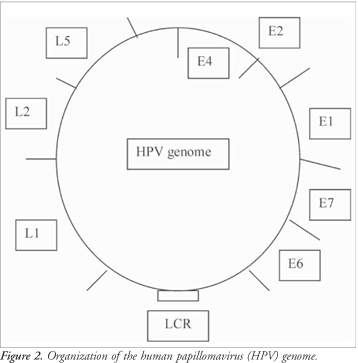The rapid progress in molecular biology has allowed the identification of the genes involved in different functions of normal cells and has also improved our understanding of the mechanisms of human carcinogenesis. The human papillomavirus (HPV) is a small double-stranded DNA tumor virus and its genes can manipulate cell cycle control to promote viral persistence and replication. The E6 and E7 proteins of high-risk HPV bind to cell cycle regulatory proteins and interfere with both G1/S and G2/M cell cycle checkpoints much more effectively than the low-risk HPV. The difference between the ability of low and high-risk HPV types to induce immortalization and transformation may well lie in their abilities to interact with the various cell cycle components, resulting in the loss of multiple cell cycle checkpoints, which are important in host genome fidelity, thus potentially resulting in accumulation of genetic abnormalities. Cervical cancer is one of the leading malignancies in women worldwide, with substantial morbidity and mortality. According to current concepts, HPV is recognized as the single most important causal agent in the pathogenesis of this cancer. HPV infection clearly precedes the development of malignancy, while being regularly associated with cervical cancer precursor lesions (all grades of squamous intraepithelial lesions). HPV-infected low-grade squamous intraepithelial lesion (SIL) has three possible outcomes: a) it may regress; b) it can persist; or c) it can make a clinical progression to in situ or invasive carcinoma. It has been well established by prospective cohort studies that the spontaneous regression rate increases in parallel with follow-up duration. In contrast, the clinical progression of lesions usually takes place quite rapidly, i.e. during the first two years from diagnosis. The mechanisms responsible for this divergent clinical behavior of HPV-associated squamous intraepithelial lesions are largely unknown, but currently under intense study in different laboratories worldwide.
Cervical cancers; Cell cycle; Human papillomavirus; Tumor suppressor genes; Histone deacetylase



